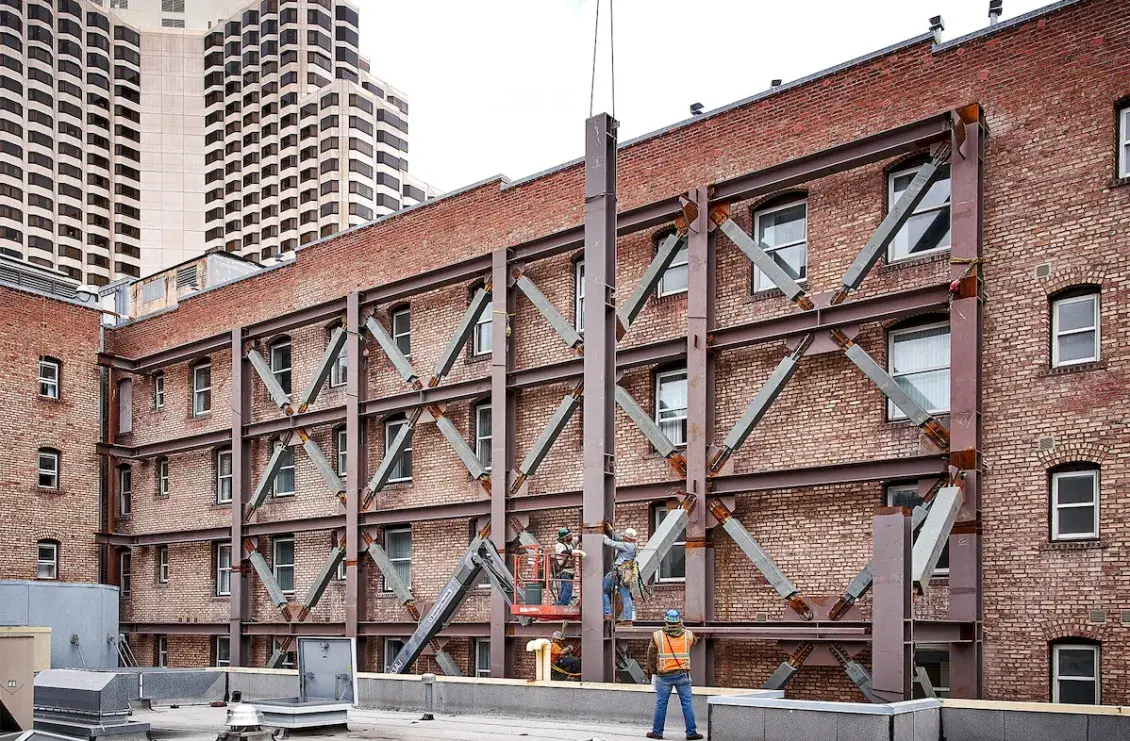Single Room Occupancy (SRO) buildings—some of California’s oldest and most affordable homes—have long served as a critical safety net for people with extremely low incomes. But aging infrastructure, rising insurance costs, and inadequate subsidies challenge even mission-driven nonprofits in continuing to operate these portfolios.
Our new report, Preserving Affordable Single Room Occupancy Portfolios Across California, brings this urgent issue into focus and explores approaches to overcome persistent financial and operational hurdles.
Through a statewide SRO Preservation Workgroup launched in 2024, Enterprise partnered with six nonprofit owners of affordable SROs to tackle shared challenges and explore collective solutions to revitalize these housing assets for long-term success and stability. Drawing on data collected across 39 SRO properties representing more than 3,000 affordable units in Southern and Northern California, the report highlights both the fragility and the enduring importance of this unique housing stock—and concludes with practical policy recommendations to ensure SROs remain well into the future.
Breaking Down the Data
The report’s findings illustrate how decades-old properties with limited reserves and constrained revenue streams are struggling to remain viable without significant new capital investment, stronger rental assistance, and policy reforms tailored to this unique housing type.
SRO Portfolios Face Unique Viability Threats
- The report identified 39 at-risk SRO properties, representing a total of 3,016 SRO units, with 1,862 serving as permanent supportive housing (PSH).
- Buildings averaged 78 units per site.
- Most of these properties date back to the early 20th century, with an average construction year of 1928 and a median year of 1913, underscoring the historic nature—and age—of California’s SRO housing stock.
- Not all SRO buildings are configured the same with respect to amenities and layout, though commonly they are considered to lack private bathrooms. Private showers were lacking in 79% of properties and a similar percentage (69%) lacked private toilets.
- Rehabilitation costs per unit were $165,000, reflective of an aging portfolio and the deferment of capital improvements due to limited operating revenue, rental income, and project reserves.
- Ninety-five percent (95%) reported an operating deficit. Only two properties reported positive cash flow.
- The average vacancy rate across all sites was 20%. Only six projects indicated single-digit vacancy rates. The difficulties of marketing units and reaching maximum occupancy have been recurring themes in workgroup conversations.
- Although rent subsidies supplement limited rental income from very low to extremely low-income households and are critical in ensuring project financial health, nearly half (43%) of units in this sample lacked any form of long-term rental assistance.
- Because of the importance of the federal Low-Income Housing Tax Credit (LIHTC) program as a potential reinvestment option, owners were asked to self-report if their SRO projects qualified as “special needs” or “at-risk” under current California Tax Credit Allocation Committee (CTCAC) guidelines. Just over one-fifth of properties (21%) met the special needs criteria, whereas a slightly
Owners Directly Subsidize SROs to Maintain Property Stability
Amid worsening project financial health outcomes, SRO owners increasingly need to infuse their own dollars into the properties to keep them afloat, or operational. Partners shared data for annual sponsor advances made to support 37 deficit properties representing 2,657 units over five consecutive years from 2020-2024.
- Partners contributed more than $24 million of their own resources to address operating gaps in distressed SRO properties.
- Total advances within this portfolio rose annually, showing a concerning trend, especially with substantive jumps in the last two years.
- Advances averaged $1,731 per unit per year, climbing steadily each year and rising 200% between 2020 and 2024. This recent spike has been primarily attributed to dramatic increases (between 200-500%) in operational costs, most notably insurance costs, which began in 2023 during policy renewals.
Year | Total Advances | Average Advances Per Unit Per Year |
2020 | $2,141,030 | $971 |
2021 | $2,683,151 | $1,312 |
2022 | $4,294,855 | $1,386 |
2023 | $6,047,236 | $2,121 |
2024 | $8,122,732 | $2,866 |
Totals/Average | $24,289,004 | $1,731 |
The Path Ahead for California’s SROs
In the face of increasing uncertainty over the future of this housing type on the part of funders and policymakers, SRO owners are confronting the realities of keeping these communities viable for the long haul. They often have to manage aging buildings with little to no reserves while also navigating complex financing and regulatory systems.
These viability threats are compounded by difficulties in marketing units and maximizing occupancy, and the inability to leverage debt or tax credits to provide the means to finance necessary building improvements. Without the opportunities for physical modernization and financial restructuring, these important housing assets risk further disrepair and will drain vital organizational resources and capacity, if a strategic and substantive set of preservation pathways is not provided.
We are encouraged by recent efforts at the state level to address SRO preservation hurdles. For instance, legislation like Senate Bill 21, recently signed by Governor Newsom, will make it easier for owners to reconfigure and convert sites into units with kitchens and baths (studio apartments).

